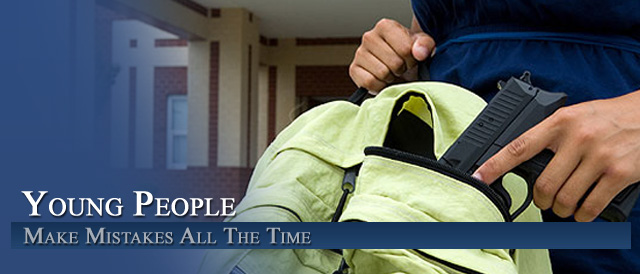
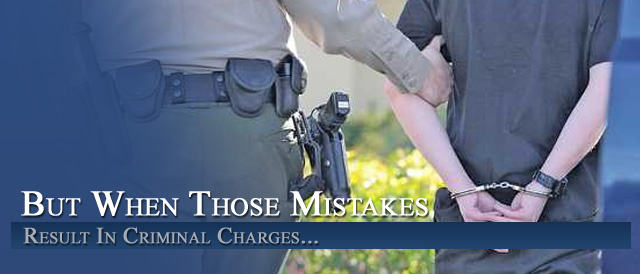
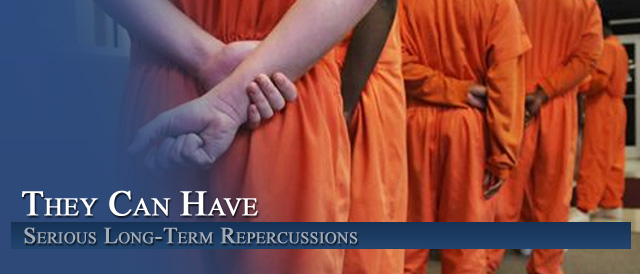
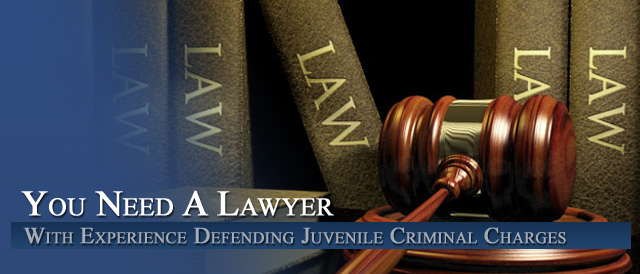
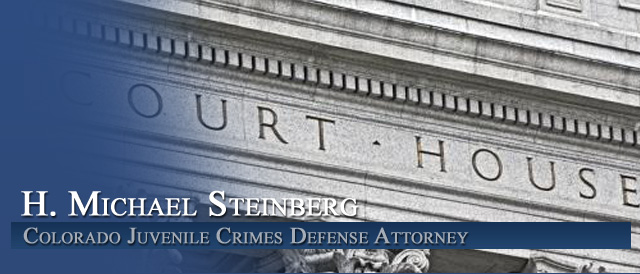
Colorado Juvenile Law – A List of Legal Terms To Help You – List II of II
By H. Michael Steinberg Colorado Juvenile Criminal Defense Lawyer
Absconding from Court Ordered Conditions:
This refers to when the youth leaves the place in which he or she has been court-ordered to reside or the services he or she has been court-ordered to receive, without permission. Absconding from court ordered conditions is a violation of court conditions.
Actual Placement:
This is the location in which the youth is placed after the Initial Screening (see Initial Screening).
Adjudication/ Adjudicatory
: The judicial hearing wherein guilt or innocence is determined either by the child’s admission of by trial to a court or jury in the juvenile justice system, adjudication is the same as a conviction. It is a finding of guilt by the court (see Conviction).
Adult:
A person eighteen (18) years of age or over, except when the Court’s jurisdiction continues past the eighteenth birthday, in which case the term “child” shall still apply.
Advisement:
A court procedure formally advising the accused of certain statutory and constitutional rights. The advisement is delivered during the first appearance in court.
Advisement of Rights:
1.) A court procedure formally advising a person of certain statutory and constitutional rights. Such advisement must be given at the first appearance in court. 2.) A set of warnings which must be given to a person upon arrest (see Miranda Warning).
Aggravating Factors:
(see also Mitigating Factors): Aggravating factors are characteristics of the youth or his or her situation that suggests he or she may need to be placed in a higher level of security. These factors include prior offenses, weapons use, the terrible nature of the crime, or threats to victims or witnesses.
Allege:
To assert to be true without proving.
Appearance:
The formal proceeding by which an offender presents him or herself to the jurisdiction of the court.
Apprehend:
To arrest, take into custody, or seize a person on a criminal charge.
Arraignment:
A court hearing where the accused is brought before the court to plead to the criminal charge in the indictment or information. The accused is advised of the charges pending against him or her, as well as his or her constitutional rights to have a lawyer and a trial.
Arrest:
An arrest refers to any time a youth is taken into police custody. Note this does not include mere police contact with the youth.
Arson:
Arson is the act of setting fire to a property.
Assessment:
This is the second stage involved in completion of the Juvenile Detention Screening and Assessment Guide (JDSAG). The Assessment consists of verifying the information completed during the Initial Screening and is used in the decision making process at the detention hearing (see Screening guide and Initial screening).
Assaultive Offense against Persons:
This term includes those crimes that involve an assault of another person. They include assault (1st, 2nd, and 3rd degree), vehicular assault, menacing, criminal extortion, aggravated extortion, reckless endangerment, and any assault against an elderly person or person with a disability (Source: CRS 18-3-201).
At-risk Adult:
An at-risk adult is any person who is sixty (60) years of age or older or any person who is eighteen (18) years of age or older and is a person with a disability (Source: CRS: 18-6.5-102; see Person with a Disability).
At-risk Juvenile:
An at-risk juvenile is any person under the age of eighteen (18) who has a disability (Source: CRS 18-6.5-102; see Person with a Disability).
Bail:
Security, in the form of money or property, deposited with the court to insure the appearance of the accused at a future time and place (see Bond).
Bail Bond:
An obligation signed by the accused, with sureties to secure his or her appearance in court.
Bench Warrant:
Process issued by the court itself, or “from the bench,” for the apprehension or arrest of a person.
Bond:
A type of security required by the court before an offender is released from custody. An accused may be released on his or her own promise (personal recognizance), by having a licensed bondsman post an agreement to pay a certain amount (bond) by personally depositing money in cash (bail), or by encumbering property (property bond). The court may allow the amount of bail posted in cash to be a percentage of the total amount of bail set; however, in the event of default, the entire amount of bail set is forfeited and becomes due to the state.
Bond Condition Violations:
This is a violation of conditions that the youth must carry out before the adjudication hearing. These include violations of the periodic telephone communications, office visits, home visits, mental health and substance abuse services, domestic violence or child abuse counseling, electronic monitoring, work release, or day reporting, and day treatment (Source: 19-2-302 [4], C.R.S.).
Bond, Personal Recognizance (PR Bond):
An obligation of record entered into before a court requiring the performance of an act such as appearing in court as instructed or penalty of money forfeiture (Webster’s 7th New Collegiate Dictionary).
Change of Venue:
The removal of a suite begun in one county or district, to another, for trial, or from one court to another in the same county or district.
Charge:
The charge is the specific offense the youth is accused of committing.
Child:
Any person under eighteen (18) years of age (Statutory Definition).
Colorado Children’s Code:
Title 19, Colorado revised statute. This code sets forth the definitions, jurisdiction, procedures, and powers in juvenile cases.
Complaint and Summons:
The formal charge, which initiates a criminal proceeding in a court. It must contain the name of the defendant, the offense, and statute number, and direct the defendant to appear before a specified court at a given date, time, and location.
Contempt of Court:
This occurs when a youth does not obey an order of the court, such as releases conditions. When the youth is released home prior to a court appearance, the youth and the parent or other responsible adult are required to sign a written promise to bring the youth to court at a set time. If the youth fails to appear, the youth and the parent or guardian may be found in contempt of court and subject to penalties (Source: CRS 19-2-302; see Release Conditions and Responsible Adult).
Conviction:
A conviction occurs when the judge or court decides that the youth is guilty of a crime (see Adjudication).
Court Finding:
These include court orders for evaluations and service referrals. They do not include orders regarding level of placement (see Level of Placement).
Crime:
A crime is an offense that is serious enough to deserve imprisonment as part of the punishment. Crimes are defined by Congress and state lawmakers.
Crime against Persons:
This includes any felony or misdemeanor crime directly committed against a person. These include manslaughter, murder, vehicular homicide, criminally, negligent homicide, assaults, menacing, criminal extortion, reckless endangerment, kidnapping, enticement, and unlawful sexual behavior (Source: CRS 18-3-201; see Felony and Misdemeanor).
Crime of Violence:
If a youth commits a crime of violence, he or she usually goes to a secure detention. Crimes of violence include: any crime against an at-risk adult or at-risk juvenile, murder, first or second degree assault, kidnapping, sexual assault, aggravated robbery, first degree arson, first degree burglary, escape, and criminal extortion. This may also include felony unlawful sexual offenses (Source: CRS 16-11-309; see Secure Detention, At-risk Adult, At-risk Juvenile, and Sex Offense).
Cultural Sensitivity:
To be culturally sensitive means to be aware of the cultural factors that may impact the interviewer in assessing the youth’s situation and the youth’s responses in the interview. Cultural variables include: ethnic background, language, economic status, gender, sexual orientation, and other non-obvious differences between the screener and the youth.
Custody of Social Services:
To be in custody of Social Services means that legal authority for the youth has been transferred to the County department responsible for child welfare placements as a result of dependency/ neglect petitions or other orders of juvenile courts.
Dangerous Weapon:
A dangerous weapon includes a firearm silencer, machine gun, short shotgun, short rifle, or ballistic knife (Source: CRS 18-12-102; see Weapon).
Deferred Disposition/Prosecution, Deferred Sentence:
Some defendants are granted a deferred prosecution, which means that the judge and district attorney (DA) permit the accused person to delay going to trial for a period of time, usually one year. During this period, the accused is supervised by a probation officer, if the person complies with all the requirements of the deferred prosecution, the charges may be dismissed.
A defendant who pleads guilty to a crime may be given a deferred sentence, which means the judge does not impose a sentence immediately but continues the case up to two years, placing the defendant under the Probation Department’s supervision. If the defendant complies with all the requirements, the charges against him will be dropped.
Delinquent/Delinquent Juvenile:
A child ten (10) years of age or older, who violates any federal or state law, except State Traffic and Game and Fish Law, or any lawful order of the court made under the Colorado Children’s Code. This is the common term for a youth who commits an illegal offense.
Delinquency Petition:
A petition charging a child with a violation of the penal statute or municipal ordinances.
Detention:
Placing the child in a facility designed for minors. This is a secure facility designed to be a non-punitive facility and located as close to the minor’s home as possible.
Detention Hearing:
A judicial hearing held within forty-eight (48) hours (excluding weekends and court holidays) after a child is taken into Temporary Custody to determine whether continued detention is necessary.
Dispositional Hearing:
A judicial hearing at which time information is presented and reviewed along with recommendations for disposition. The conclusion is the court’s official disposition order, (i.e. probation, commitment, etc.).
District Attorney (DA):
A lawyer elected of appointed in a specific district to serve as the chief or administrative prosecutor for the State in criminal cases.
Diversion:
A decision is made by a person with authority or a delegate of that person that results in specific official action of the legal system not being taken in regard to a specific juvenile or child and in lieu thereof providing individually designed services by a specific program. The goal of diversion is to prevent further involvement of the juvenile or child in the formal legal system. Diversion of a juvenile or child may take place either at the pre-filing level as an alternative to the probation services following an adjudicatory hearing pursuant to section 19-2-907. “Services”, as used in this subsection (44), includes but is not limited to diagnostic needs assessment, restitution programs, community services, job training and placement, specialized tutoring, constructive recreational activities, general counseling and counseling during a crisis situation, and follow-up activities (Source: CRS 19-1-103 [44]).
DYC (Department of Youth Corrections) Commitment:
When a youth is committed to DYC, this means legal custody for the youth is transferred to DYC. DYC commitment occurs when a judge or magistrate sentences a youth for charges of delinquent acts.
DYC Escapee:
A DYC escapee is a committed youth who leaves without permission the facility in which he or she has been placed by DYC. Depending on the district, a list of current DYC escapees is provided in the CCIC database.
Electronic Home Monitoring:
This may be a condition under which the youth is released from custody. Electronic home monitoring means that the youth is required to be within a certain area and wear an electric ankle bracelet that keeps track of whether the youth goes outside of that area (see Release with Services).
Expungment:
The legal process whereby a child’s juvenile court record can be sealed upon request three (3) years after unconditional release from probation, ten (10) years upon release from Department of Human Services or parole.
Failure to Appear (FTA):
FTA is a legal status that means the youth did not appear at a scheduled court hearing.
Family:
A family is usually defined as two or more people who live together and share resources. Family is commonly referred to as the placement where the youth will be returned after release from custody.
Felony:
A felony is serious crime, regarded by the law as grave, and more serious than a misdemeanor. Felonies are usually punishable by a prison term (see Misdemeanor).
Felony Offense against a Person:
This is a serious crime against a person such as manslaughter, murder, vehicular homicide, criminally negligent homicide, assaults, menacing, criminal extortion, reckless endangerment, kidnapping, enticement of a child, and unlawful sexual behavior. It is distinguished from a crime against a person because it only refers to a felony offense (Source: CRS -18-3-101, 18-3-201, 18-3-201, 18-3-301, 18-3-401; see Crime against a Person and Felony).
Firearm:
A firearm includes any type of gun or other device capable of discharging bullets (Source: CRS 18-1-901).
Gang Member:
This is an individual who is one of a group of three or more individuals with a common interest, bond, or activity, characterized by criminal or delinquent conduct, engaged in either collectively or individually (Source: CRS 19-1-103 [52]).
Guardian Ad Litem (GAL):
A person appointed by a court to look after the interests of a child in litigation.
Guardianship:
The duty and authority vested in a person or agency buy court action to make major decisions affecting a child, which may include: consent of marriage, military enlistment, medical or surgical treatment, adoption when parental rights have been terminated, or representation of a child in legal actions.
Habeas Corpus:
An order of the court to bring a person before the court to show cause why that person is being deprived of his or her liberty.
Home:
This includes any place in which the youth normally lives, usually with whomever he or she considers “family” (see Family).
Home Detention/Services:
Home detention is considered a level four placement. This refers to when the youth is released to home with increased supervision and/or services prior to the detention hearing. The term is often used interchangeably used with “release conditions,” pretrial supervision, and pending detention hearing (see Level of Placement and Release Conditions).
Illegal Weapon:
This refers to weapons that are not commonplace and are against the law to have in possession. They include a blackjack, gas gun, metallic knuckles, gravity knife, or switchblade knife (Source: CRS 18-12-102).
Incarceration:
Imprisoned in a lockup/holding facility, jail, juvenile detention center, juvenile correctional facility, or prison.
Indictment:
An accusation in writing found and presented by a grand jury, charging that a person therein named has done some act, or been guilty of some omission that by law is a crime.
Informal Adjustment:
A type of disposition used primarily for first time offenders, which does not involve a court hearing. If the child admits the facts of the allegation (with parental consent), the child may be supervised for a period without being adjudicated.
Jurisdiction:
The legal Power to hear and decide cases; the territorial limits of such power.
Juvenile Court:
The Division of the district court or, in Denver, the separate court, which exercises original jurisdiction over children and subject matter set forth in the Colorado Children’s Code.
Juvenile Detention and Screening Guide (JDSAG):
The instrument used statewide to determine the appropriate level of detention for youth in the custody of law enforcement.
Level of Placement:
There are five different places to which a youth can be sent after the Initial Screening and Assessment. They include: Level 1 (secure detention), Level 2 (Staff Secure), Level 3 (Residential/Shelter), Level 4 (Home Detention/Services), and Level 5 (Release). (See Secure Detention, Staff Secure, Residential/Shelter, Home Detention/Services, and Release).
Local Policy:
This refers to the policies within each judicial district that indicate when an override of a “screaming tree” decision is necessary. These local policies are almost always authorized by the local courts (see Screaming Tree).
Mandatory Hold Factors:
Some factors absolutely require that the youth be held in a secure detention. These factors include: current crime of violence, use of a firearm during commission of a felony offense against a person, and possession of a dangerous weapon or illegal weapon (Source: 19-2-508; see Crime of Violence, Firearm, Felony Offense against a Person, Dangerous Weapon, and Illegal Weapon).
Miranda Warning:
Four (4) statements which must be made to a suspect under interrogation before any evidence or confession elicited from that person can be admitted as evidence in court: 1.The person’s right to remain silent. 2. Anything the person says may and will be used against them in a court. 3. The person’s right to have the assistance of an attorney, and 4. The person’s right to have an attorney appointed if he or she cannot afford one.
Misdemeanor:
A misdemeanor is a crime less serious than a felony. Minor theft (of articles worth less than a certain amount), first-time drunk driving and leaving the scene of an accident are all common misdemeanors (see Felony).
Mittimus:
An order of court directing the sheriff to transport a defendant to a specific place to serve a sentence of imprisonment.
Municipal Court:
Courts whose territorial authority is confined to the city or community.
National Crime Information Center (NCIC):
A National computer system with information relative to any active warrants on individuals.
Nolo Contendere (no’lo kno-ten’de-re):
A pleading usually used by defendants in criminal cases, which literally means, “I will not contest it,” and is treated as a guilty plea when it comes for sentencing.
Non-secure Living Situations:
These include placements that are unlocked facilities such as foster care or Residential Child Care Facilities (RCCF’s; see Placement).
Ordinance:
A law passed by a city or town lawmaking body.
Order:
An order means a decision issued by a court or judge.
Override:
A screener may decide that the youth placement as indicated by the screening tree decision is inappropriate and needs to be changed based on one or more of the following conditions: local policy, professional judgment, aggravating factors, mitigating factors, or other special factors. In most cases, a screening override requires supervisory approval (see Screening Tree, Local Policy, Professional Judgment, Aggravating Factors, and Mitigating Factors).
Pending (charge):
This refers to a charge that has bee already filed.
Personal Recognizance (PR):
Security for the appearance of a criminal defendant, in the form of a personal promise without posting any bail or filing a formal bond.
Person with a Disability (see also At-Risk Adult):
This includes any person who: 1.) is impaired because of the loss of or permanent loss of a hand or foot or because of blindness or the permanent impairment of vision in both eyes to such a degree as to constitute virtual blindness; 2.) is unable to walk, see, hear, or speak; 3.) is unable to breathe without mechanical help; 4.) is developmentally disabled; 5.) is mentally impaired or mentally ill, or 6.) is blind (Source: 18-6.5-102).
Petition:
A formal application in writing made to the Court, requesting judicial action concerning some matter therein set forth.
Placement:
A placement is a residence in which the child has been formally placed. Examples include foster care and Residential Child Care Facilities (RCCF).
Plea:
The defendant’s formal response to criminal charges. If a defendant stands mute, the judge will enter a plea of not guilty for the defendant. Examples are: guilty, not guilty, nolo contendere, not guilty by reason of insanity.
Plea Bargaining:
A compromise reached by the prosecution and defense after negation resulting in a plea of guilty or nolo contendere to a charge or one of the charges, or to a lesser charge, dismissal of remaining charges, elimination of the trial, and the possibility of a lesser sentence.
Plea-bargaining is conducted between counsel, and not before the judge. The compromise reached is presented to the judge by the prosecution and must be agreed upon by the judge before it can become effective. Plea-bargaining results from a number of factors: 1. the prosecution has sole discretion to file charges, 2. Open negotiation may disclose the strengths or weaknesses of either side’s case, and 3. Heavy trial dockets necessitate reducing the trial load in large volume in prosecution offenses.
Positive Rapport:
The screener develops positive rapport with the youth when the youth shows that he or she feels fairly comfortable with the screener and is able to answer most questions without too much distress. Positive rapport includes positive regard.
Pre-adjudication Status:
This status refers to when the judge has not made a decision about whether or not the youth is guilty.
Preliminary Hearing (Prelem):
A discretionary hearing to determine if there is a probable cause to believe that the facts alleged in the petition bring the child/defendant within the courts jurisdiction.
Pre-Sentence Investigation:
Social diagnostic study, which is a report to the judge to help him determine an appropriate sentence.
Prior:
In the context of this manual, this term refers to one or more incidents of a certain behavior that occurred before the present point in time.
Probation Violation:
a probation violation occurs when the youth does not comply with what he or she is required to do according to his or her probation agreement. Example of probation violations include: new offenses while on probation, not reporting to a probation officer, not paying restitution, and failing to complete useful public services.
Professional Judgment:
This refers to the screener’s decision regarding the most appropriate placement level for the youth based on the screener’s own experience, training, understanding of the youth’s risks and needs, and common sense.
Prostitution:
Prostitution is the act or practice of engaging in sexual activity indiscriminately especially for money. This includes exchanging/trading sex for drugs, money, or a place to stay.
Probable Cause:
A legal term meaning that there is sufficient reason or belief to detain or cause a petition to be filed. This is based on a legal examination of the facts.
Probation:
A sentence alternative to incarceration, whereby an adjudicated juvenile may be released under certain conditions and under the supervision of a probation officer for a specific time. In some cases, a short detention sentence or “work release” program is combined with the probation.
Probationer:
Convicted law violator allowed to remain in free society while under a probation officer’s supervision, in lieu of serving a detention sentence or being committed to the Division of Youth Corrections.
Prosecution:
The procedure by which a person is charged and tried for a criminal offense. Also, the charging, as opposed to defending, side of a criminal case.
Public Defender:
An attorney, system of attorney’s, funded by the state, to represent indigent persons in criminal or juvenile cases.
Public Safety Risk:
This refers to factors that suggest the youth may pose a threat to the safety or well being of members of the community.
Recidivism:
The return to criminal activity after completion of a sentence following an earlier conviction. A statistical measure of “failure” of offenders previously convicted of a crime.
Release:
this is considered a level 5 placement. It can include release to a parent or guardian or release with services (see Level of Placement, Release to a Parent or Guardian, and Release with Services).
Release Conditions:
This occurs when the youth is awaiting court appearances and includes conditions such as: pretrial supervision, home detention, pending detention hearing, promise to appear, and electronic home monitoring (CRS 19-2-302[4]).
Release to Parent or Guardian:
This occurs when the youth who has been taken into temporary custody is released into the care and supervision of a parent or other responsible adult (Source: CRS 19-2-507[3]; see Responsible Adult).
Release with Services:
This occurs when the court decides that a youth may be released from custody on certain conditions, such as electronic home monitoring and periodic reporting (see Electronic Home Monitoring).
Residential:
Along with shelter placement, this is considered a Level 3 placement. It includes placement in the community in a non-secure living situation (see Shelter, Level of Placement and Non-Secure Living Situation).
Responsible Adult:
A responsible adult is the child’s parent, legal guardian or custodian, or any other person responsible for the youth’s health and welfare.
Revocation:
A court order rescinding or withdrawing a previous court order. When a person on probation has violated one or more of the terms and conditions of probation, a petition to revoke probation or modify the terms and conditions may be filed with the court. If the allegations are proven, the judge may modify the terms of probation or revoke probation and exercise any of the dispositional alternatives, including commitment to the Division of Youth Corrections.
Risk Assessment Scale:
A tool to assist in predicting continued criminal activity. The primary factors considered are; criminal history, stability, substance abuse and employment.
Runaway:
This refers to when the youth unjustifiably leaves his or her designated living setting, usually overnight, one or more times. If the youth left those settings because of justifiable reasons (for example: if he or she is in danger), the instance should not be considered runaway.
Runaway (repeated):
This is the act of running away two or more times (see Runaway).
Screener:
This refers to the person appointed by the judge or court to recommend whether a juvenile who is in temporary custody should be released or admitted to a detention or shelter facility (see also Screening Team).
Screening Guide:
This is the common term for the juvenile Detention Screening and Assessment Guide (JDASG), which is used to screen and access youth who have been picked up and detained by law enforcement in the juvenile justice system. It is also commonly referred to as the Screening Tree and Screen.
Screening Team:
The person or persons designated by the chief judge in each judicial district or, for the second judicial district, the presiding judge of Denver Juvenile Court to make recommendations to the juvenile court concerning whether a juvenile taken in to temporary custody should be released or admitted to a detention or shelter facility (see also Screener; Source: CRS 19-1-103[94.5]).
Screening Tree:
This is a decision support tool used during the Initial Screening to determine temporary placement of youth who have been picked up by police and present for screening and assessment.
Secure Detention:
This is considered a Level 1 placement. Secure detention refers to the custodial status of youth who are being confined after arrest or while awaiting the completion of judicial proceedings in physically secure/locked facility (see Level of Placement and Secure Facility).
Secure Facility:
This refers to a facility licensed by the Department of Human Services (DHS) or operated by the Division of Youth Corrections (DYC) as a physically secure or locked facility, or is operated by a county as a secure detention facility (see Secure Detention).
Self-Harm:
Self-harm means putting oneself at risk of injury or death. Examples would include cutting behavior, running from placements, and severe substance abuse.
Serious Repeat Delinquency:
This means that a youth engages in behaviors repeatedly and/or frequently that indicate a pattern of delinquency. This could include such behaviors such as prior felony adjudications, pending felony charges at the time of the new arrest, being on bond for other delinquency charges, past failures to appear (FTA) for court hearings, a history of crimes against persons, arson or weapon related offenses (see Felony, Adjudication, Bond, Failure to Appear (FTA), Crimes Against Persons, Arson, and Weapon).
Severe Substance Abuse:
Substance abuse refers to abuse of alcohol or drugs. Severe substance abuse refers to the use of substances such an extent that it interferes with the person’s behavior and life activities. It also refers to substance use during the commission of criminal behavior, or arrest or conviction of drug related charges.
Sex Offense:
A sex offense is a crime such as rape and pedophilia (sex with a child). It also includes enticement (offering money or reward for sex) of a child, and/or sexual assault when the victim is a child younger than fifteen (15) years old. There are different degrees of these offenses (1st, 2nd, etc.) that are defined by various statutes. These may be affected by the age of the child, the age of the perpetrator, whether the perpetrator in a position of trust, etc. Sex offenses also include indecent exposure, incest, sexual exploitation of a child, trafficking in children, keeping a place of child prostitution, pandering or pimping for child prostitution, and/or patronizing a child prostitute (Source: CRS 18-3-411).
Serious Habitual Offender/ Directed Intervention (SHODI):
This status refers to a list of known juvenile offenders who are to be arrested and detained if found breaking the law. It is applicable to jurisdictions with formal programs operating in the law enforcement community.
Shelter:
Along with residential placement, this is considered a Level 3 placement. It includes the temporary care of a child in unrestricted facilities while waiting for the court to make a decision about placement, or waiting for placement decisions to be carried out (see Residential and Level of Placement).
Stable School/Work Situation:
This concept refers to whether the youth has a full-time schedule and has been in regular attendance in either setting.
Staff Secure Facility:
This is considered a Level 2 placement. It is a group facility or home where each juvenile is under continuous staff supervision and where all services such as education and treatment are provided at that location. A staff secure facility may or may not be a locked facility (Source: CRS 19-1-103).
Suicide (thoughts of):
This refers to thought and/or intentions to take one’s own life.
Summons:
A notice requiring a person to appear in court on a specific day at a specific time. The summons is returned to the court to reflect that the person was served with it.
Threats to Harm:
These include verbalization and gestures that would alert any reasonable person to the possibility of being harmed.
Venue:
The particular county, city or geographical area in which a court with jurisdictions may hear and determine a case.
Verdict:
The decision the jury or judge makes at the conclusion of trials to the accused guilt or innocence.
Victim:
This refers to the person immediately and directly harmed in some way by the youth, and anyone with whom the victim is close and has regular contact (Source: 19-1-103[112]).
Victimization:
This includes any acts of physical, sexual, or emotional abuse that adversely affect the youth or his or her family (see Family).
Victimization (risk of):
This includes any behaviors that make the youth vulnerable to being harmed in some way within the community. Examples of such behaviors include prostitution, homelessness, a pattern of dangerous drug use, and gang involvement (See Prostitution).
Warrant:
A warrant s a written order issued by a judicial official authorizing an officer to perform a specified act required for the administration of justice.
Weapon:
A weapon is an object that could be used to physically harm or threaten to harm another individual.
Weapon Use:
This includes using any object to physically harm or threaten to harm another person.
Witness:
A witness is someone who has seen or knows something about a crime or serious event.
Youth:
This is a juvenile between the ages of ten (10) and seventeen (17) who is being charged with any crime committed prior to their eighteenth birthday.
Other Articles of Interest:
- Probation – Terms – Release – Revocation 19-2-925
- Colorado Juvenile Law – A List of Legal Terms To Help You – List I of II
- Juvenile Probation Officers – Powers and Duties 19-2-926
- Sentencing – Requirements Imposed on Parents 19-2-919
- Colorado Criminal Law – Did My Child Just Confess At The School?












